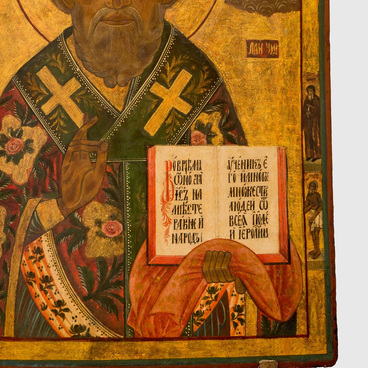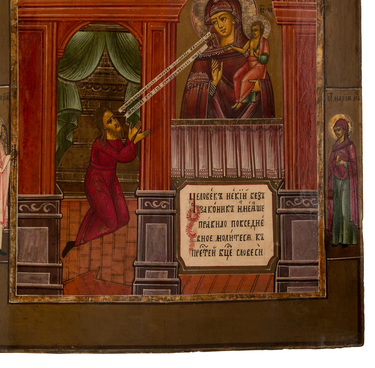According to hagiographic texts, George was born in the late 2nd century into a wealthy family. As a young man, he became a soldier, a chiliarch (commander of about one thousand men), and a favorite of Emperor Diocletian. His father died early, after which the family moved to the city of Lydda (the modern-day city of Lod in Israel).
When George was 20 years old, his mother died, and the young man inherited a large fortune. After the persecution of Christians was announced by Emperor Diocletian, the young warrior gave his property to the needy and directly told the emperor that he was a Christian. Diocletian ordered to cruelly torture George, which he endured and each time, with God’s help, he was healed of the injuries he suffered. Then, George was beheaded. He was buried in Lydda, that is why he is also called St. George of Lydda.
Researchers and experts still argue about the origin of the iconographic plot “The Miracle of St. George and the Dragon”, the identity of the serpent depicted on such icons, and the place and time when this event occurred. Church tradition, recorded much later after the saint’s death, reports that near a certain city inhabited by pagans (the names vary in different texts), a serpent (dragon) settled in the lake. It began to devour people and animals. The ruler of the city, on the advice of pagan priests, made a list of all inhabitants and began sending them to the snake to be eaten. Finally, it was his daughter Yelisava’s turn. Suddenly a rider on a white horse appeared and struck the snake with a spear — it was St. George. He explained that he slayed the serpent with the power of Jesus Christ.
The displayed medium-sized household icon “The
Miracle of Saint George and the Dragon” is made in keeping with two styles —
the naïve and Old Russian manners of icon painting. The warrior in gilded
(yellow) armor and a red cloak sits on a rearing white horse, striking the
snake with a spear in its open mouth. Like the entire image, George’s face is painted
in a simplified manner: paint of lighter tones is applied to the dark brown
base; dark lines sculpt his facial features. Several strips of whitewash
highlights enliven the image. The armor, the warrior’s robes, his horse,
Yelisava, the black-and-red serpent, and the walls of the city are outlined
rather rigidly and graphically. In the upper left corner, there is a half-length
image of Jesus Christ. He blesses the saint.


